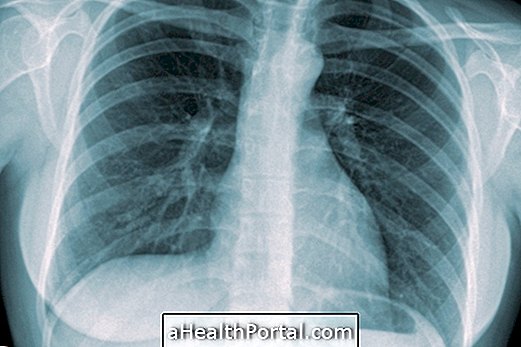In case of 'internal fever' the person feels the body very hot but the thermometer does not show that temperature rise. The most common is the person presenting the same symptoms that he presents in the case of a real fever, such as malaise, chills and cold sweat, but the thermometer continues at 36 to 37ºC, which does not indicate fever.
Although the person complains that he feels the body very warm, in fact, the 'internal fever' does not exist, it is only a popular way of expressing that person presents the same symptoms that are present in a common fever, but without the elevation of the temperature can be felt in the palm of the hand, nor proven by the thermometer.
Common Symptoms of Fever
In a common fever, in addition to raising the temperature to above 37.5 ° C, it is normal to have symptoms such as:
- Feeling of heat;
- Cold sweat;
- Chills or chills throughout the day;
- Malaise;
- Headache;
- Tiredness;
- Lack of energy.
However, in the case of internal fever, although all these symptoms are present, there is no elevation of temperature that can be measured.
Learn how to use the thermometer correctly to know if you have a fever.

What is fever?
Fever is a reaction of the body to fight harmful micro-organisms, being a natural reaction in case of infection caused by viruses, fungi, bacteria or parasites. Fever is only really harmful when it is above 40 ° C, which can happen quickly, especially in infants and children, and cause seizures.
A low fever up to 38ºC is considered a feverish fever, a temperature rise, or simply a feverish state, not being very serious, indicating only that you have to be alert and take off the excess clothing to try to cool the body to normal temperature of 36 ° C. Already the fever above 38.5ºC can indicate the need to take a medicine to lower the fever, in addition to other natural methods to normalize body temperature.
The 'thermostat' that controls body temperature is the hypothalamus, which is very sensitive to any change in temperature. It causes the body to produce more heat, which is dissipated into the middle, through the skin, so whenever there is a real rise in temperature, the thermometer is able to indicate. In this way, it can be concluded that internal fever does not exist.
What to do in case of 'internal fever'
When the person thinks he has an 'internal fever' he should take a warm bath and lie down to rest. Often the cause of this feeling of fever is stress and anxiety attacks, which can also cause shivers throughout the body.
Here are 7 ways to control anxiety naturally.
It is only recommended to take some medicine to lower the fever, such as Paracetamol or Ibuprofen, under medical advice and when the thermometer registers at least 38.5ºC. As in the case of internal fever, the thermometer does not show this temperature, one should not take any medicine to try to fight a fever that does not exist.
If symptoms persist, you should go to the doctor to perform tests to find out what may be happening. In addition to blood and urine tests, your doctor may also order chest X-rays, for example to check for any lung changes that may be caused by a fever.
What can cause internal fever
Emotional causes such as stress and anxiety crisis, and ovulation of the woman during the fertile period are the main causes of internal fever. However, the person may also feel that they have a fever after doing exercises or some type of physical exertion, such as carrying heavy bags or climbing a flight of stairs.
At the onset of an influenza or cold, discomfort, tiredness and a feeling of heaviness in the body are frequent, and sometimes people refer to the sensation of internal fever. In that case, taking a home remedy, like ginger tea, very warm, can be a good way to feel better.
When to go to the doctor
It is advised to seek medical help when, in addition to the sensation of the internal fever, other symptoms such as:
- sneezing, coughing,
- vomiting, diarrhea,
- sores in the mouth,
- rapid rise in temperature to above 39 ° C,
- bleeding through the nose, anus or vagina, with no apparent explanation.
In this case it is important to tell the doctor all the symptoms that he presents, when they came up, if something was changed in the food or if he was in another country, for example.
With this information the doctor may be suspicious of an illness and request tests if necessary, indicating the most appropriate treatment.























